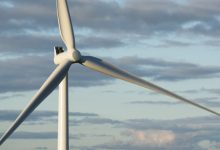An independent online platform designed to connect corporate energy buyers with renewable energy developers has attracted more than 7,000MW of large scale wind and solar projects hungry to snare contracts to underpin the next phase of Australia’s energy transition.
The members only Marketplace, which was set in motion by the Business Renewables Centre – Australia (BRC-A) in October last year, went live on Tuesday this week, as a sort of Tinder for renewable Power Purchase Agreements, although buyers do their own match-making.
As of this week, corporate energy buyers who sign up for a membership will find 67 solar and wind energy projects to choose from, offering more than 7,000MW (7GW) of a mix of solar and wind energy capacity, via around 30 different developers.
In doing so, the developers are hoping to be able to by-pass the gate-keeping and controls of the big energy retailers, and deliver cheaper renewable energy options to corporates that now recognise the power of wind and solar to lower this bills.
“They’re looking for that off-taker so that they can get bankability for that project and start development,” said Jackie McKeon, project director at the BRC-A.
“We’re really trying to break (the corporate PPA process) down into its … building blocks and lay it out it for the buyers,” McKeon told RenewEconomy in an interview on Wednesday – “so that we can get this 7000MW up and built.”
In that 7GW pipeline, McKeon says it is a fairly even split between solar and wind, although with a slight prevalence of solar projects at the moment. And while storage is often included in the proposed developments, it is not – at this stage, anyway – accounted for as a separate category.
The sizes of the projects vary dramatically, from anywhere between 5MW to 500MW, McKeon says, and are spread around the country, including NSW (26), Queensland (12), South Australia (8), Victoria (15), Tasmania (1), and Western Australia (4).
As for the buyers – which McKeon says make up around half of the portal’s membership base – they’re looking for the right mix of renewables to hedge their electricity costs and satisfy a growing push towards sustainable operations.
These come from all walks of industry, ranging from property, to health, government, higher education, financial services, food and beverages, mining, retail, construction, telecoms, consumer goods, and transport and logistics.
“Our membership is just over 100 (at this stage), and that divides into about 50 per cent buyers and then about 30 per cent developers, and then the rest are partners and service providers,” McKeon told RE. (You can see some of the members and their logos on the BRC-A website here.)
Interestingly, there are some electricity retailers among that number, including Flow Power, and the retail arm of global giant Engie, Simply Energy. McKeon says there has been interest from the big gen-tailers, too.
Members – and membership is free for the first year of BRC-A operations (until October 2019) – can gain access to a Buyers’ Roadmap, an online resource library including primers, guides, templates, case studies and other material relevant to the stages of the PPA process.
As McKeon explains it, there are tiers of access to the portal, which determine who sees what. Energy buyers, for example, can see all of the uploaded projects, while project developers can only see their own projects and edit them. And there’s no brokerage.
Price information is also excluded from from the portal, although buyers can readily see a project’s proposed capacity, location, planning status, network connection status, length of contract – all of which will play into pricing negotiations.
“On price, they have to contact the developer to start the conversation,” says McKeon. “It is very much a price-driven market, and the developers know that and are feeling that.”
That said, she adds, “we get a real mix of interest from both the procurement part of the business and the sustainability part of the business. It’s a real mix.”
To that end, the RE100 movement has been a key influence, McKeon says, as more and more major, global corporations publicly commit to sourcing all of the their energy needs from renewables.
“RE 100 is really raising the bar. It’s been bigger internationally (than in Australia), but now you’ve got not only the Australian subsidiaries and Australian global companies joining, but some leading Australian countries joining, too.
“The RE100 movement is about ‘what are we going to do, and how are we going to achieve it?’ And we are very much a piece of the ‘how are we going to achieve it’ puzzle,” she said.










